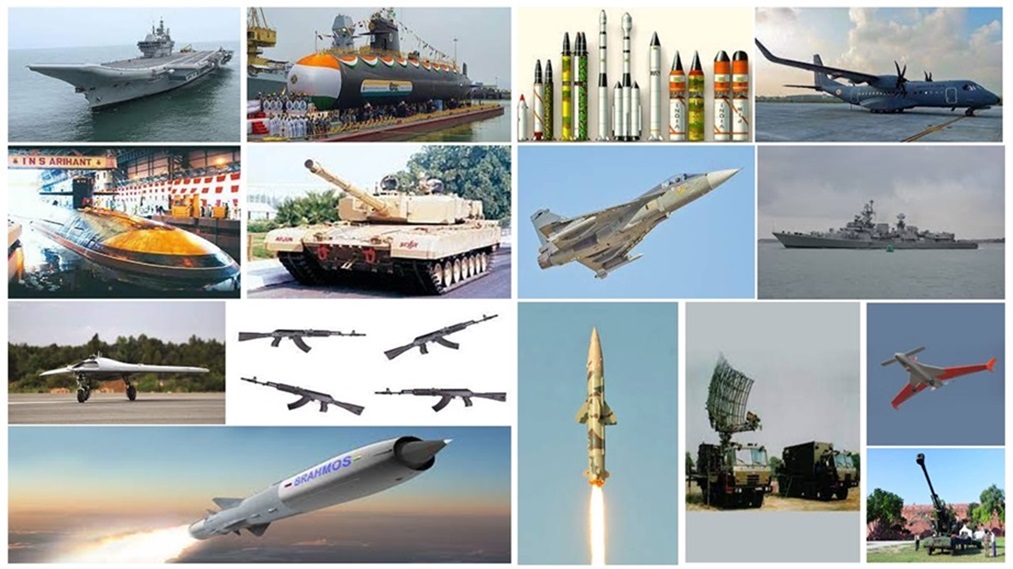The recent clash with Pakistan has showcased India’s military capabilities at the highest level. India’s home-grown military equipment, coupled with its research tech, has been proven highly effective in taking on defence equipment from Pakistan, Turkey, China, and the USA, amongst others. In the face of ongoing regional security challenges, India has adopted a robust, multi-domain defense strategy incorporating both kinetic and non-kinetic warfare capabilities. It is not only strengthening India’s national defense but also positioning the country as a rising global player in the defense industry.
India’s kinetic arsenal includes a range of conventional weapons systems, many of which are now indigenously developed under the “Atmanirbhar Bharat” (self-reliant India) initiative. Key platforms include:
INS Vikrant: India’s first indigenous aircraft carrier, symbolizing naval self-sufficiency.
Tejas LCA (Light Combat Aircraft): A homegrown multirole fighter developed by HAL, now being exported.
Arjun MBT (Main Battle Tank): An indigenous tank that enhances India’s armored capabilities.
BrahMos Missile: A joint Indo-Russian supersonic cruise missile, with ongoing development of hypersonic variants.
Dhanush and ATAGS Artillery Guns: Indigenous towed artillery systems that have entered service and are now being offered for export.
Akash Surface-to-Air Missile System: A short-to-medium-range air defense system developed by DRDO and already exported to countries like Armenia. Multiple nations, including the Philippines and Vietnam, have shown interest.
Pinaka Multi-Barrel Rocket Launcher (MBRL): An all-weather, highly mobile rocket artillery system, capable of striking targets at ranges over 75 km. Pinaka systems have been cleared for export.
HAL Dhruv ALH (Advanced Light Helicopter): A versatile twin-engine, multi-role helicopter used in utility, search and rescue, and disaster response missions. It has been exported to countries like Mauritius, Nepal, and Ecuador.
Rudra (Weaponized Dhruv): An armed variant of the Dhruv helicopter, it is equipped with rockets, air-to-air missiles, and an integrated Electronic Warfare (EW) suite. Rudra is a key component of India’s tactical aviation and is combat-proven in high-altitude operations.
Alongside these, India continues to acquire and upgrade systems like the S-400 Triumf air defense system and Rafale fighter jets to bolster kinetic deterrence.
Global Partnerships
Over the past few years, India has expanded its defense exports substantially, from under ₹1,000 crore in 2010 to over ₹21,000 crore by 2023. Indian arms and platforms are now being exported to more than 85 countries.
Key Importers of Indian Defense Systems:
Armenia: Akash SAMs, artillery guns, and ammunition.
Philippines: BrahMos missiles and prospective deals for other systems.
Mauritius, Seychelles, and Maldives: Patrol vessels and coastal radar networks
Myanmar, Sri Lanka, and Guyana: Aircraft, naval systems, and radar technologies.
Brazil and Chile: Naval and surveillance hardware.
UAE and Egypt: Engaged in talks for helicopters, drones, and Tejas jets.
Malaysia: Tejas LCA (shortlisted).
Argentina and Nigeria: Interested in aircraft and missile systems.
Indonesia, Vietnam, and Saudi Arabia: Exploring missile and drone procurements.
France and the U.S.: Emerging as partners in co-development and tech transfer, such as in jet engines and unmanned systems.
India’s fusion of kinetic and non-kinetic capabilities—anchored by indigenous innovation—is transforming its military profile. No longer a mere importer, India is becoming a defense exporter and strategic partner of choice for countries across Asia, Africa, Latin America, and even Europe.
From Tejas jets and Akash missiles to cyber capabilities and satellite warfare, India is showcasing itself as a self-reliant, future-ready defense model. As India defends its national interests, it is also stepping onto the global stage as a credible defense exporter and strategic partner of choice.
With platforms like Dhruv, Rudra, Pinaka, Tejas, and BrahMos, India is reshaping its security architecture and offering democratic nations a trusted alternative in the global defense industry.
This growth not only strengthens national security but also places India on the global defense map as a reliable and scalable supplier of cutting-edge military technology, while potentially rising as a major military exporter in the coming years.
